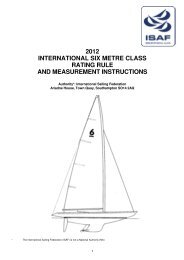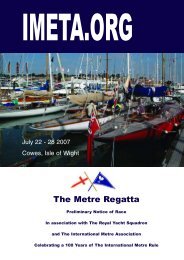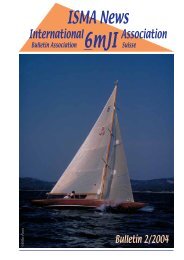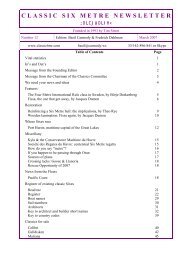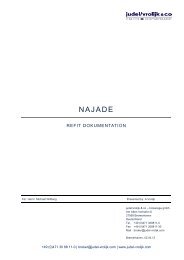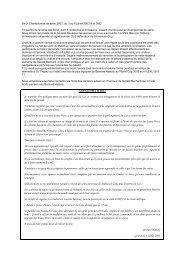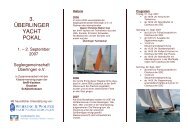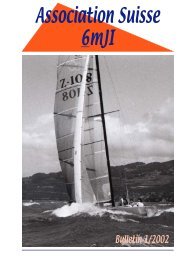CLASSIC SIX METRE NEWSLETTER
CLASSIC SIX METRE NEWSLETTER
CLASSIC SIX METRE NEWSLETTER
You also want an ePaper? Increase the reach of your titles
YUMPU automatically turns print PDFs into web optimized ePapers that Google loves.
The Russian L-6 class<br />
Just at the time that the “classic” era of Sixes was ending, a new class of wooden yachts, the<br />
L-6, was born in Russia. The first boat was launched in 1963, coincident with the launch of<br />
the last classic Six, AUT 47 Stromer, designed by Olin Stephens. The L-6 is by no means a<br />
copy of Sixes, but one can sense the influence of the International Rule.<br />
The origins of the class go back to the period<br />
1932 - 1935 when N. Lüdewig developed the<br />
Russian Rule of Yacht Classification<br />
(RRYC). This rule gave rise to classes such<br />
as the L-30, the L-45, the L-60, and the L-<br />
100. (The International Rule 5.5 class was<br />
also active in Russia during this period.) The<br />
L-60 was designed by N. Alexandrov and<br />
Anatoli Kiseljov. About twenty were built<br />
during 1936 - 1941. It is considered to be the<br />
slightly smaller ancestor of the L-6. L-60’s<br />
were named after Russia’s rivers, e.g. Svir,<br />
Igora, Volga, Luga and Narova. Additional<br />
information on the RRYC can be found in<br />
the article “Yacht Rating” by Daniel D.<br />
Strohmeier (Marine Technology, April 1974, Anatoli Petrovich Kiseljov<br />
pp.125-133).<br />
At the time that the RRYC was revised in 1958, Kiselov, now based at the Leningrad<br />
Experimental Shipyard, designed the L-6. It won the competition for a new national class<br />
against another design, the CR-8 designed by N.V. Grigorie.<br />
Kiselov died in 1962, just before the launching of Angara, the first L-6.<br />
Russian companies bought the L-6’s as part of company organised sporting activities. Others<br />
were purchased by yacht clubs. The in Germany crews ranged from workers and students to<br />
engineers.<br />
Interestingly, there is a project underway to build a modern version of the L-6, called the<br />
SOL-6 (see www.sol-6.de).<br />
As for the rating formula, the L-6 rating formula (left) is more inspired by the American<br />
Universal Rule (right) (where D = displacement) than by the International Rule.<br />
S<br />
16 = L +<br />
0.<br />
2 ⋅ L ⋅ S<br />
3<br />
R =<br />
5 D<br />
3<br />
D<br />
It is unlikely that the length L is measured identically in the two formulas. The major<br />
differences with respect to a Six are that the L-6 is a racing-cruiser, its length is slightly<br />
over12 m. and its weight is 6.500 kg, with a ballast keel of 3.500 kg.<br />
- 5-



